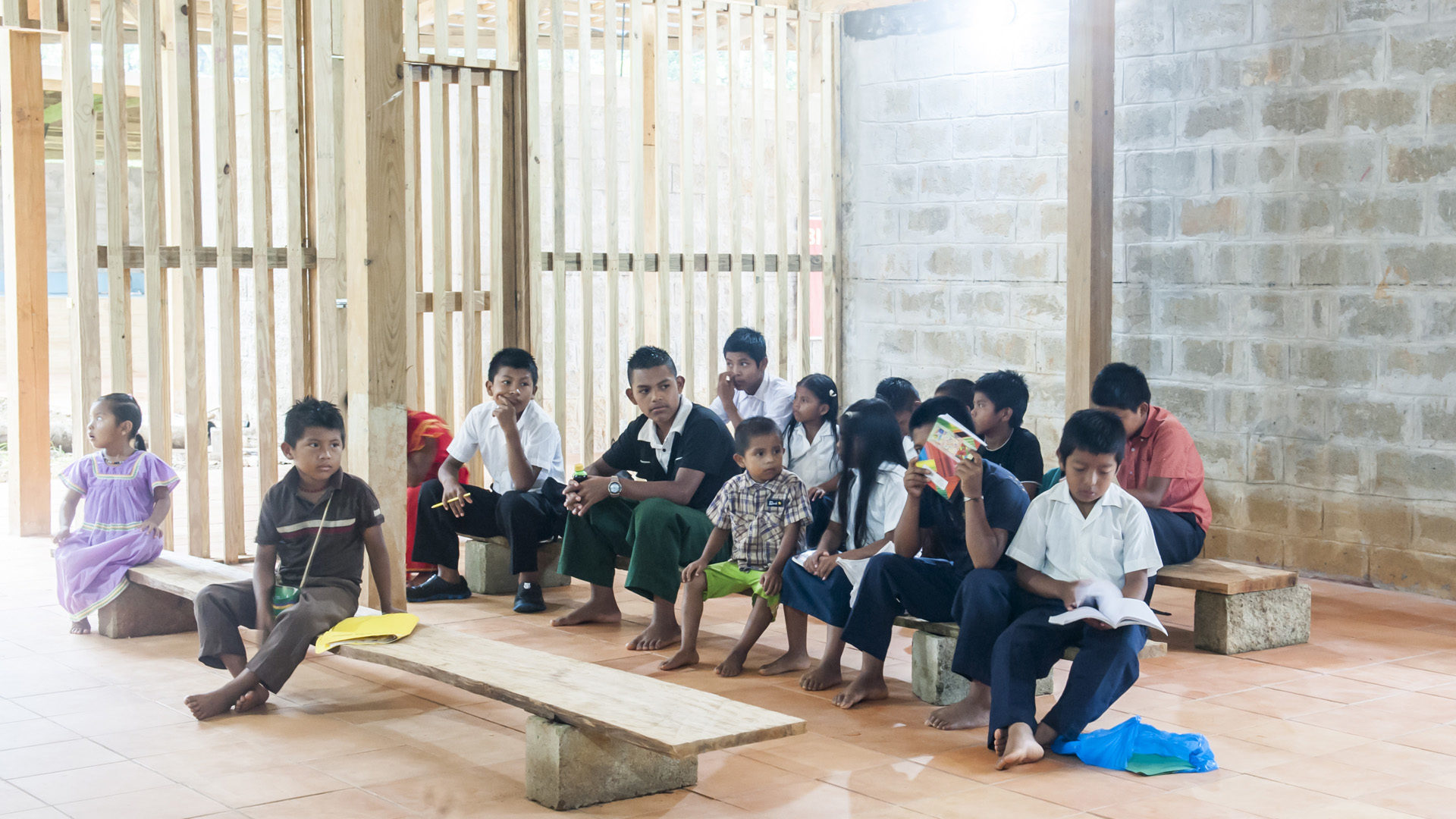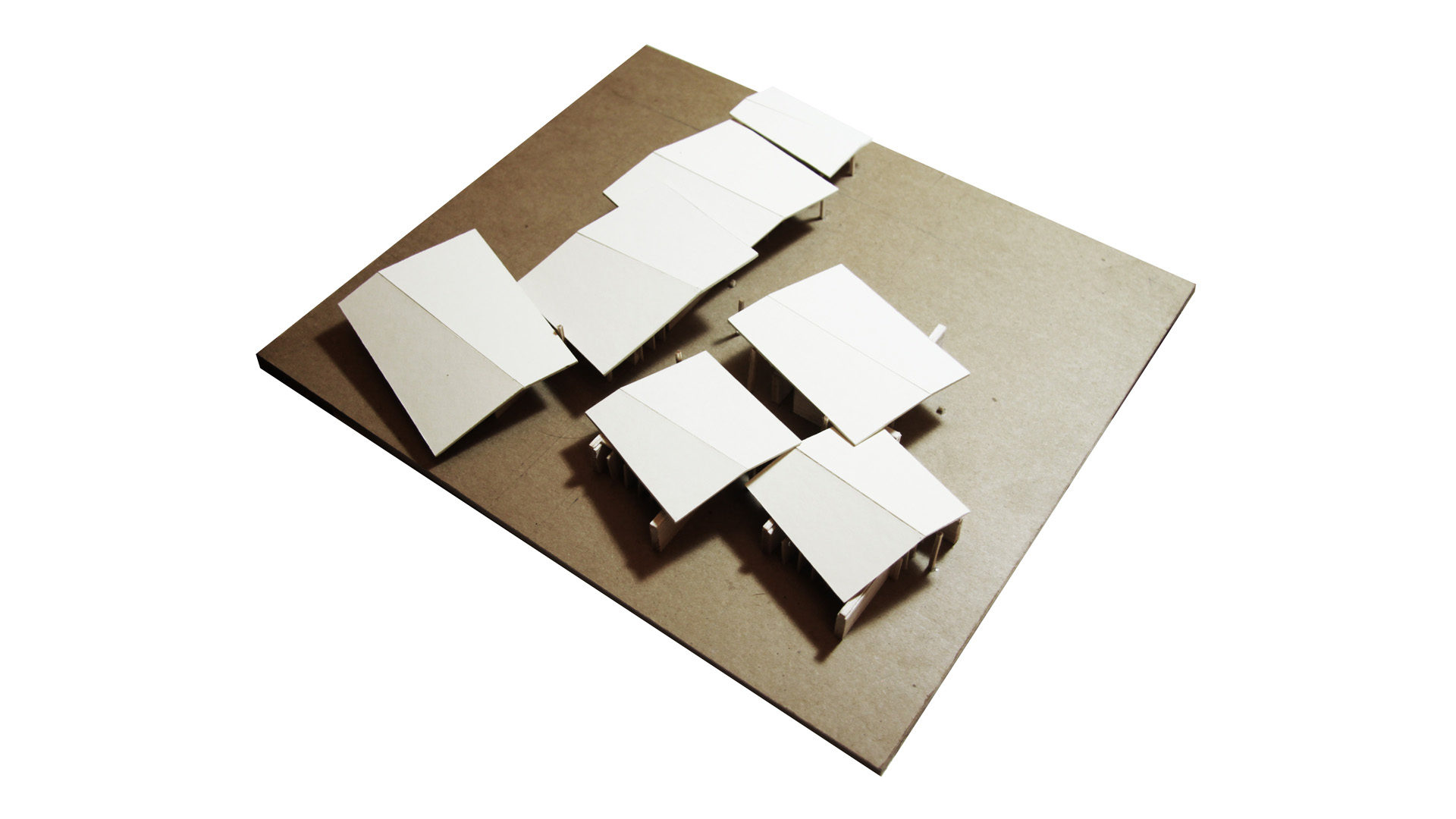Projecting in the rainforest and under such specific and different conditions was a great challenge that we had to face, always trying to find culturally acceptable responses for the community, climatically effective and functional within its use.
We work under several fundamental premises: 1. Classroom spaces must provide visual privacy, but must allow ventilation. 2. The design should provide covered spaces for children to play since both sun and tropical rain and high temperatures do not allow much freedom of movement. 3. Flexibility and adaptability in the proposal, since it is necessary to think that the growth of the communities is very fast and it is necessary to think of a way of self-managed growth of the school. 4. Logistics of material transport and the construction itself. 5. Materials to use simple, known and easy to find.
The privacy and ventilation of the classrooms are achieved by separating the ceiling from the walls, always allowing air circulation, and making some solid and other wooden closings with staggered panelling that allows air to pass through but does not allow visualization, favouring the crossed ventilation.
Covered spaces and flexibility are achieved through a modular design. Each classroom with its roof is a modular unit. Each unit is made up of the 7x7m classroom (49m2 of the classroom according to MEDUCA regulations) and a roof structure that covers an area of 3m around so that each one provides a covered space around it for play. This cover is rotated 30º which produces a distinction of spaces, some narrower, which do not allow play and are passing through, and others wider that do allow games. These modules are designed so that they overlap next to each other using the same pillars at the ends but with the covers at different levels. This allows an infinite growth of the school, also always achieving very wide covered play spaces around the classrooms.
Materials and transport logistics are linked hand in hand, since the projects are located in places of very difficult access, all the material used must be possible to transport and build with a maximum of two or three people per each piece. Therefore, the structure is thought of treated wood with a 25-year durability guarantee, the ceilings will be of Zinc Sheet and the walls will be of compacted earth from the place. Finally, it could not be done in this way due to the composition of the land and it was made with cement blocks. The floor was built with rustic ceramic pieces.
The end result is a school with very fluid spaces, versatile and highly functional, with the ability to adapt to the topography naturally and with the possibility of growth over time easily.















